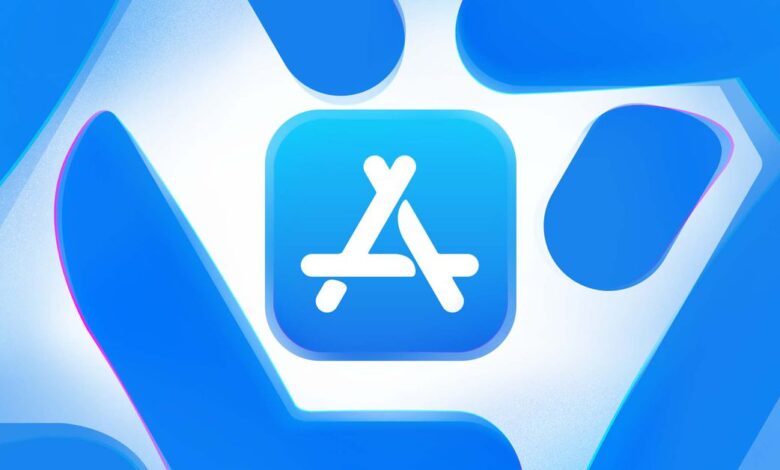The Apple App Store: a brief history of major policy changes

[ad_1]
Apple’s app store policies have caused controversy and consternation many times over the years, but few periods have been as active and strange as the last two weeks. For the first time, we are seeing Apple being forced to react directly to lawsuits and regulators with substantial policy changes.
The biggest example has of course just happened today: a ruling from judge Yvonne Gonzalez Rogers in the Epic v. Apple case. Apple must now allow apps to link out to other purchasing options in addition to in-app purchases. But that follows two court case settlements and a new law in South Korea that also have implications for how Apple treats developers. The pace of change is increasing and instead of leading, Apple is reacting.
Apple will surely appeal the Epic ruling, but even if it ultimately loses, there’s a good chance that it won’t be enough to appease the legislators and lawyers who are circling Apple’s store as the main way to rein in Apple’s power. And there’s an even better chance that the developers who must try to navigate all those rules will also continue to feel like Apple is spending more effort protecting its profits than empowering developers.
Here, then, is a very brief history of the major policy changes and statements Apple has made about the App Store over the years. The impetus for these different changes (or, as Apple tends to call them, “clarifications”) has varied, but the trend has remained the same. Apple has worked hard to keep the fundamental, central model of a 30 percent cut intact while softening it around the edges to appease various constituencies.
But just take a look at the timing and cadence of these changes. After a development period from 2007 to 2011 when Apple fills out the features, there’s a large gap when Apple made few notable policy changes. Then, a major shift in 2016 to address some growing discontent among developers. And then, starting in the summer of 2019, there is an ever-increasing cadence of controversies and policy tweaks to address them.
As time goes on, policy changes are coming faster and the hairs Apple is splitting are getting thinner. My instinct is to say that enough is enough: Apple should just make a couple of sweeping changes and get it all done at once.
Clearly, Apple doesn’t agree.
Instead, the company is in a defensive crouch, stepping back only when forced and as little as possible. That might be a good strategy to make sure every regulator feels like it got its pound of flesh and thus minimize the change Apple will have to make, as Steven Sinofsky speculated, but it’s a terrible strategy for making developers — and customers — feel good about the App Store.
June 11th, 2007
At WWDC, Steve Jobs says that Apple won’t have the ability for developers to install “native” apps, but instead will need to use web apps. It was the infamous “sweet solution.”
Oct. 17th, 2007
Apple changes its mind as it becomes clear that the demand is there (and as the home brew app movement gains momentum). It announces it will release an SDK for the iPhone.
July 10th, 2008
The Apple App Store for the iPhone launches with 500 apps and a 30 percent cut of all sales going to Apple.
August 7th, 2008
In an interview with Nick Wingfield, Steve Jobs says of the App Store that “we don’t expect this to be a big profit generator.”
June 8th, 2009
Apple announces that developers will be able to add in-app purchases using Apple’s payment processing (and 30 percent cut). It limits in-app purchases to paid apps, however.
Oct. 15th, 2009
Apple changes its mind and allows in-app purchases to be extended to free apps. It drives a huge shift in business models for many games.
Feb. 1st, 2011
Apple begins rejecting apps that don’t use its in-app purchasing system. It rejects Sony’s e-reader app. Apps are not allowed to link out to purchase or subscription pages within their apps, even if the user completes the purchase in a separate browser window.
Feb. 15th, 2011
In a big new push to bring news and magazines into Apple’s ecosystem, it launches subscriptions on the App Store for publishers. Fees are still 30 percent, and Apple makes it easy to unsubscribe — and hard for publishers to gather data about their readers.
July 28th, 2011
As we learned in discovery for the recent Epic v. Apple case, an Apple executive suggests cutting App Store commission in an internal email on this date. As we all know, that didn’t happen.
Jan. 15th, 2014
Apple settles a case with the FTC over in-app purchases and offers consumers $32 million in refunds. It’s a response to a raft of apps using tricky tactics to get in-app purchases. Over time, more parental controls, restraints on those purchases, and oversight on apps are added.
Nov. 9th, 2014
Apple changes the button naming on the App Store from “free” to “get,” to better reflect that some games have in-app purchases.
:no_upscale()/cdn.vox-cdn.com/uploads/chorus_asset/file/13085425/jbareham_160607_1080_0005_final_02.0.0.1465351786.jpg)
June 16th, 2016
In a massive and consequential change to the app economy, Apple introduces a much-expanded model for subscriptions for apps. It was big enough that our article on the event dubbed it App Store 2.0. The changes included dropping Apple’s fee to 15 percent after the first year of subscription revenue. This is also when Apple introduced the concept of the “reader app”, a controversial category that allowed users to access subscription content purchased elsewhere (like Netflix or Kindle) but disallowed linking out to those purchase options. Finally, Apple announced it would begin introducing ads in App Store search.
The change was so big that at that year’s WWDC, Apple commissioned a graphic novel where the art told one story but all the text was literally the App Store rules. In one section, we see the story of a son getting a haircut for his father’s funeral while the captions list the “acceptable” business models in the App Store.
Nov. 1st, 2016
A 2020 House subcommittee investigation revealed that in 2016, Amazon has a secret deal with Apple that grants it lower fees than were available to other developers. Earlier in 2020, Apple had attempted to claim the deal was an “established program for premium subscription video entertainment providers.” Even if it was “established,” it certainly wasn’t widely known.
June 5th, 2018
During its Worldwide Developers Conference, Apple quietly updates its guidelines to allow for so-called remote mirroring apps like Steam Link. It didn’t allow for full game services on the App Store, but carved out the ability to mirror a PC on an iPhone or iPad.
April 28th, 2019
A controversy grows over Apple’s crackdown on developers who use enterprise tools for managing iPhones to offer parental controls to consumers. Eventually, Apple needed to publicly explain why it was banning those apps. The move was viewed as anti-competitive because Apple had its own parental controls. Apple countered that those enterprise tools could be misused by hackers in a consumer context.
May 29th, 2019
Apple publishes a new webpage (since changed) titled App Store Principles and Practices. It was essentially a marketing page designed to explain Apple’s rules for the App Store and why it believed those guidelines protected consumers.
June 4th, 2019
In another quiet update during WWDC, Apple updates its guidelines to allow enterprise tools to be used for parental controls, allowing them to use mobile device manager and VPN APIs.
July 12th, 2019
Apple begins restoring banned parental control apps to the App Store following the controversy earlier in the year.
April 1st, 2020
This is the date we officially learned about the so-called “established” program for video streaming providers to bypass the 30 percent fee for individual video rentals and purchases.
There is no chance in bloody hell that we’re going to pay Apple’s ransom. I will burn this house down myself, before I let gangsters like that spin it for spoils. This is profoundly, perversely abusive and unfair.
— DHH (@dhh) June 16, 2020
June 22nd, 2020
In what turned out to be a big controversy for the App Store, an email app called Hey is banned because it did not offer a way to sign up for the $99 / year service inside the app itself. At issue was that “reader” app category — only those types of apps were allowed to use that business model and Apple said email didn’t count. On this date, Hey made a minor change to its app to skirt Apple’s requirement that apps provide functionality without an outside subscription and so Apple approves the Hey email app.
August 6th, 2020
In a new battle, streaming games platforms like Stadia and Microsoft’s xCloud are officially banned from the App Store. Apple’s ruling requires every game on the services to be submitted individually — a nonstarter for those services. Ultimately both would eventually return as browser-based apps after Apple quietly added the necessary Safari support for them to work.
August 13th, 2020
Apple kicks Fortnite off the App Store following Epic’s gambit to add its own in-app purchases to the game. It would kick off a huge battle — both in the court of public opinion and in actual court. The Epic v. Apple case would turn out to be a major event in the App Store saga, revealing all sorts of internal emails and ultimately leading to consequential rulings.
Nov. 18th, 2020
In an attempt to hang on to its 30 percent cut but still grant smaller iphone app developers some concessions, Apple introduces the “App Store Small Business Program.” Developers who make less than $1 million per year were allowed to apply to join the program and have their cut reduced to 15 percent.
Sept. 11th, 2020
Apple makes it official that streaming game services are allowed in the App Store, but only if each game inside the services are submitted individually. It is still not enough for Stadia and xCloud.
June 23rd, 2021
In a new 16-page report, Apple lays out its arguments against allowing sideloading iPhone apps in a report titled “Building a Trusted Ecosystem for Millions of Apps,” claiming the practice would make its phones less secure and trustworthy for users.
August 26th, 2021
Apple announces another new program offering a lower rate to a subset of developers. Under the new program, news publishers that participated in Apple News to a sufficient degree qualify for a 15 percent cut on their other apps instead of 30.
August 26th, 2021
Apple settles a class action lawsuit with developers. In the proposed settlement, the company “clarifies” that developers are allowed to email their users directly with information about how they could subscribe to services outside the App Store. It’s unclear if this is actually a change and even if it is, it’s a tiny one.
August 31st, 2021
A new law in South Korea requires both Google and Apple to allow for third-party payment systems on apps in their respective app stores. It’s too soon to see how the companies will react and what the law’s effect both inside and outside South Korea will be.
Sept. 1st, 2021
In another lawsuit settlement, Apple concedes to let apps like Netflix, Spotify, and Kindle have a single link out to their payment services inside their apps. It’s a tiny crack in the so-called “anti-steering” rules, but it’s limited to a single link and limited to the so-called “reader apps” category that Apple itself has defined.
Sept. 10th, 2021
Apple rules that it won’t allow Fortnite to return to the App Store in South Korea, despite the new law there.
Sept. 10th, 2020
In a huge ruling in the Epic v. Apple, the judge says that Apple is “permanently restrained and enjoined from prohibiting developers from including in their apps and their metadata buttons, external links, or other calls to action that direct customers to purchasing mechanisms, in addition to In-App Purchasing and communicating with customers through points of contact obtained voluntarily from customers through account registration within the app.” It is also established that Apple does not have an illegal monopoly.
Appeals from both Epic and Apple are expected.
[ad_2]





